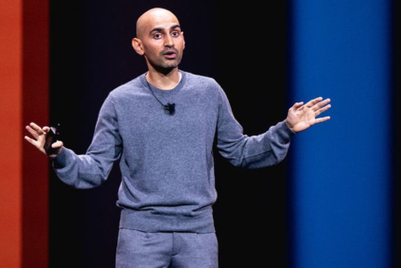.jpg&h=570&w=855&q=100&v=20250320&c=1)
From SearchGPT to Perplexity, new AI-driven search engines are gaining ground and have the potential to change search behaviour. Generative AI is now the primary discovery layer for millions of consumers and enterprise decision-makers.
AI-generated traffic is surging, with Adobe citing a 4,700% YoY increase to US retail sites. These visitors spend 10% longer on-site, view 32% more pages, and yield 84% higher revenue per visit.
But most brands are not prepared for the GEO era.
According to a new whitepaper from full-stack digital agency Pulp Strategy, a majority of brands are missing from AI-generated answers and of the ones present, many encounter hallucinated capabilities, mistaken identities and disproportionate negative sentiment.
The GEO Benchmark Index 2025 found that 90% of consumer brands exhibited negative sentiment bias in AI-generated summaries.
A particularly significant observation is the consistent exclusion of brands from AI-generated responses. Over two-thirds of brands (68%) failed to appear for one or more core commercial prompts. This absence was especially notable in mid- and lower-funnel queries driven by USPs or brand 10 reasons-to-believe. High search rankings in traditional SEO did not guarantee recall by AI engines.
“AI assistants are rewriting how markets understand brands,” said Ambika Sharma, founder and chief strategist, Pulp Strategy. “This research shows the reality inside the models — and most brands will not like what they find.”
The report analysed 70 full-spectrum LLM visibility audits across 350-plus cross-industry brands via 408,000 real prompts simulations and 60+ CMO interviews to understand why 68% of brands were invisible inside AI-generated search and how this impacts trust, demand, and competitive relevance. Each audit included content inventory, hallucination and gap checks, top prompts, competitor battlecards, and visibility recommendations.
The report found that 88% of brands suffered from inconsistent naming and recognition across models and 52% encountered hallucinated capabilities. Examples include attribution of fictitious product lines, incorrect reporting of founding dates, invented partnerships, or misattributing a competitor’s feature as one’s own.
Quantitative analysis further reveals that the mention of “hallucination" exceeded 200 times across the 70 anonymised audits on average, roughly three times per report.
Pulp Strategy found that these gaps are caused not by brand performance but by non–machine-readable content, outdated formats (PDFs, unstructured pages), and weak trust signals in AI knowledge graphs. References to “structured data” and “schema” absences appeared more than 600 times, underscoring the recurring recommendation for machine-readable content standards.
The agency warned that CMOs who disregard these signals risk relinquishing control of their brand narrative to algorithms indifferent to long-term strategy.
In contrast, those who embrace GEO can proactively steer conversations, safeguard their reputation, and capture high-value intent at the source.


.jpg&h=334&w=500&q=100&v=20250320&c=1)


.jpg&h=334&w=500&q=100&v=20250320&c=1)







.jpeg&h=268&w=401&q=100&v=20250320&c=1)
.jpg&h=268&w=401&q=100&v=20250320&c=1)


.jpg&h=268&w=401&q=100&v=20250320&c=1)


